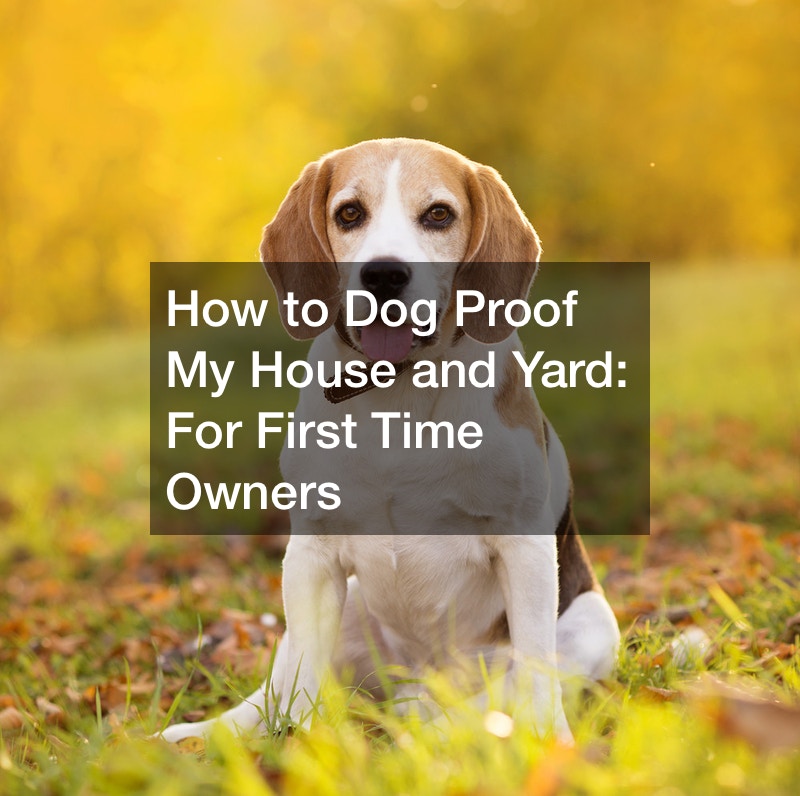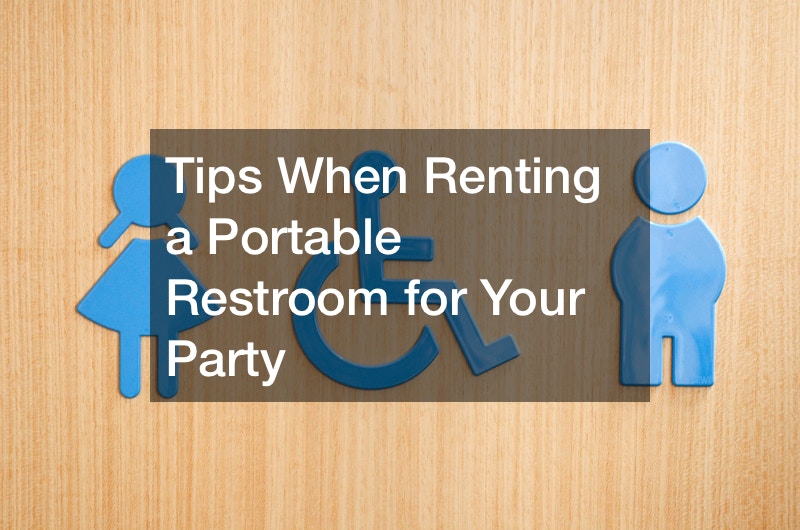
Pets! Any first-time pet owner will want the best for their friends. Investing in a pet-proof home ensures that your dog is comfortable in the long run. This pet-proofing helps minimize serious accidents, including accidents caused by electrical sockets. Various steps go into dog-proofing your house. They will include the following.
Start With the Kitchen

While the kitchen is one of the best parts of the house, it can be the most dangerous for your dog. You could attribute this to the various foods, chemicals, and waste found in the kitchen. Unless you understand what to remove from the kitchen, your dog could suffer multiple injuries and even fatalities in the long run.
In most cases, you will need to remove the trash can from the kitchen. Making it inaccessible to the dog will help enhance protection against chemicals and dangerous foods. Overstayed and rotten foods could significantly affect the health of your dog. This food might cause stomach upsets and digestion issues. Besides, the food could be complete yuck.
Trash cans might also have bones, which could present choking issues. Sharp bones might injure the dog, causing bruises and even death in some instances. For this reason, it would be best to make the trash can either covered or inaccessible to the dog.
Always ensure that the countertops are inaccessible for the dogs. Most human foods have proven to be an issue for most dogs. Letting the dog eat this food implies that you could end up paying expensive medical fees, as you’ll need to hire a veterinary doctor. And if you are a first dog owner, vet fees can rack up extremely fast. So please take extra precautions with puppy-proofing your kitchen as emergency veterinary service could cost you a fortune.
You might also need to install barriers in the kitchen. These barriers ensure that the dogs can only access specific areas, guaranteeing their safety.
The Bathroom is Important

Dog-proofing your bathroom will help enhance your pet’s safety and comfort. A cluttered or unsupervised bathroom is not suitable for a dog, thanks to the threat posed. The threat could be more significant for a playful puppy or a dog that keeps wandering. This pup might damage or destroy various equipment or stuff in the bathroom. Notably, these threats could be fatal to your puppy.
You’ll also need to consider when dog-proofing the toilet. This will suffice if you have pups, as they could easily trip and injure themselves in the toilet bowl. At the same time, your puppy could decide to drink from the toilet bowl, exposing itself to more danger. Some puppies tend to drown in the bowl. As such, it would be best to secure the toilet with a child safety latch, ensuring that the puppy does not open it.
Various bathrooms have dedicated storage spaces. Some of these storage spaces contain medications and personal grooming items which your dog should not access. Placing them in an open area could pose a threat to your dog or puppy. Some dogs are curious, and they could mistakenly consume these medications, exposing themselves to danger. For this reason, ensure that you store your medications and personal grooming items in a locked cabinet.
Typically, a bathroom has rugs that might appeal to a teething puppy. This puppy could be playful and curious enough to chew up this rug. In turn, its digestive system could block or get injured in the long run. You can avoid this by removing the carpets from the bathroom until the puppy is old enough.
Suppose you have a trash bin in the bathroom. In this case, it would be best to remove it on time. Your puppy might want to knock it from time to time, causing a significant mess. It might also get into the bin, consuming harmful items. Some things could be so dangerous that you will need to take the pup to an animal hospital.
Be wary of harmful chemicals in the bathroom, from fabric softeners to detergents and cleaners. Making these items inaccessible to the dog helps make the space much safer for your pet. Remember, canines are explorative, meaning they could consume some of these items if they come across them. These items are toxic, and you need not have them in the open.
Focus on the Living Room

While you might disagree, the living room is one of the most dangerous places for a puppy. This place could spell doom for your pet unless you prepare it adequately. Various steps go into preparing this room for your dog, especially as a first-time owner. They include the following.
Suppose you have indoor plants that help brighten your space. In this case, it would be best to confirm whether there are any toxic ones around. Various indoor houseplants have proven harmful to pets. They include lilies, aloe vera, jade, dumb cane, and ivy. If you have any of these plants, it will help if you remove them from the living room. This move will help protect the puppy from toxicity.
You’ll also need to watch out for anything breakable or significantly valuable. Dogs are playful, and they might break some of the items in your living room. Removing these items will serve two purposes: protect the dog from injuries and ensure that you do not lose your valuables. Feel free to place them in inaccessible areas. You could also consider custom picture framing if the items include photos.
Do you have a fireplace in the living room? A fireplace helps keep your living room cozy and warm. However, this fireplace could cause significant discomfort to your puppy. Some dogs might not know the danger of naked flames, jumping into them and hurting themselves. For this reason, it would help if you invested in a screen that helps protect the dog from the naked flame.
At the same time, candles are not the best whenever you have a dog in the living room. Your pet could knock them over, increasing the risk of starting a fire.
A tidy living room is an excellent haven for your dog. Ensure that everything in the living room is placed correctly, minimizing injuries and trippings. In this case, ensure that you do not leave any choking hazards on the surface. You might also need to remove any pieces that could cause allergic reactions to your dog.
In addition, ensure that there are no loose cables on the surface. This move will protect your dog from tripping. It will also eliminate a choking hazard for most dogs. You could indulge a professional to help you organize your cables better.
Excellent air circulation is vital for your dog. Ensure that the living room has enough vents for better ventilation. In this case, you might need to purchase new and more reliable residential air conditioner units. You might also need to check your windows, ensuring that they are big enough to improve air circulation.
Get to the Bedroom
The bedroom is yet another vital room to dog-proof. It contains various sensitive items, meaning that you must be extremely careful before you let your dog in. Fortunately, not so much needs to be done in the bedroom.
Always pay attention to your clothing, shoes, and bedding. Ensure that all these items are inaccessible to the dog. Remember, most puppies will want to chew clothes, slippers, and bedding. Leaving these items unsupervised or unattended implies that you will need to replace them much sooner than you expect.
Invest in a clothes hamper to help store your clothes. Place this hamper in the closet, ensuring that the dog does not reach it. You will also need to tuck the bedsheets between the spring box and the mattress, ensuring that the puppy does not remove them. It will also ensure that the fabrics are less tempting for the pup.
Various indoor plants can be in the bedroom too. In this case, it would be best to ensure no toxic breeds there. That is because dogs could knock over these plants or chew them, exposing themselves to significant danger in the long run. Experts will recommend that you put plants in high places, limiting access.
If you keep medications in the bedroom, ensure that you stash them in safe places. Please place them in a drawer or cabinet and lock them. This way, the dog will not destroy the drugs or consume them mistakenly. When dog-proofing your bedroom, one mistake you should avoid is leaving medication, lotions, and creams on countertops.
It will also be wise to stash small items, including reading glasses, books, and remote controls. All these items might attract puppies, who will convert them into chewing toys. As such, stow them away in locked drawers or cabinets. You could also consider placing treats and pet toys outside the bedroom, where the puppies could spend their time.
Garden and Yard

Your backyard and garage are part of your home, and you’ll need to dog-proof them too. Extensive work goes into ensuring that the backyard is safe for your dog. You might also need to hire professionals to prepare this part of the home.
Backyard hardscaping should be your first move. Hardscaping refers to the various non-living elements in your landscaping. Whether you use wood, pavers, or brick, ensure that your outdoor space is safe for your dog. Focus on items that will enhance the dog’s comfort and safety. Stone and masonry are the best choices for dogs, as they help minimize digging.
You might also need to build a reliable deck for your pet. Getting suitable decks will ensure that your dog is safe, comfortable, and relaxed. Usually, it would help if you avoided wooden decks, thanks to the danger they pose to paws and feet. These wooden decks might have loose nails and splintered boards, which causes more trouble for the dog.
Instead, focus on vinyl deck surfaces. Vinyl is safe for dogs, allowing them to scratch their paws without worrying about injuring their claws. At the same time, you could consider a walkway made from gravel or paving stones. This walkway allows your dog to walk more comfortably, avoiding bacteria and injuries.
A beautiful garden will also come in handy. Unfortunately, you might have to make your flowerbed less attractive if you get a dog. This way, it becomes easier to discourage the dog from playing with the flowers.
Dog-Proof the Garage Too
You are likely to spend time with your dog in the garage. That means this garage needs to be pet-friendly too. This process could be considerably hard in the garage, yet you’ll need to do it.
First, ensure that toxins are inaccessible. From lubricants and oils to other chemicals, ensure no toxins lie on the surface. Instead, keep them in locked cabinets and drawers. You could also place them on relatively high shelves.
You will also need to remove sharp objects from the surface. Some of these objects could pose a significant threat to the dog, including causing injuries. In the same breath, remove any tools with sharp edges from the surface. They could be fatal for the dog.
Temperature control in the garage will help ensure that the dog is comfortable. You can improve this temperature control by introducing vents and windows. These two elements will improve air circulation and temperature regulation. You might also install ceiling fans to ensure that the room remains relatively calm at all times.
The surface of your garage has to be clean. A clean floor protects your dog against health complications. However, you must use eco-friendly detergents and materials to clean this garage. Waterproof flooring installation could help too.
Lastly, ensure that your garage has open space. Enough space allows your dog to move around effortlessly. It will also ensure that your dog is comfortable enough to play around at all times.
In conclusion, dog-proofing your property will help you avoid various issues: health expenses, dog boarding, and vet services. The methods mentioned above would be a perfect place to start. However, you could hire a professional to help you if you are not sure about what you need to change.




